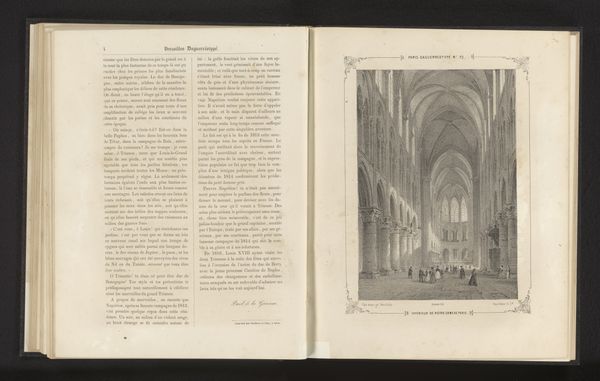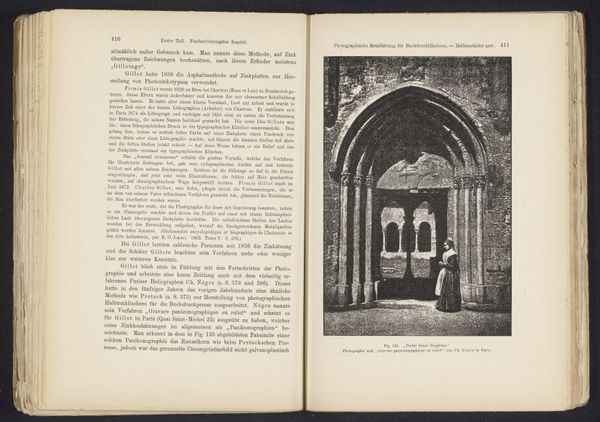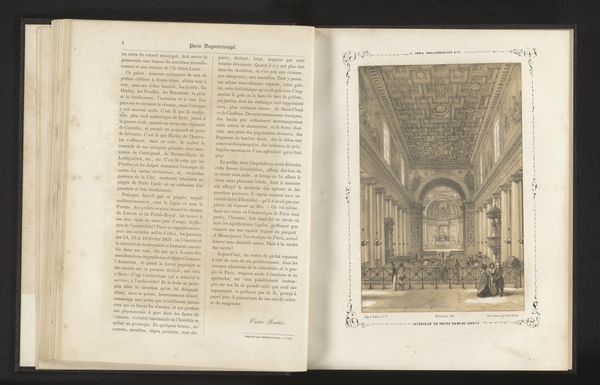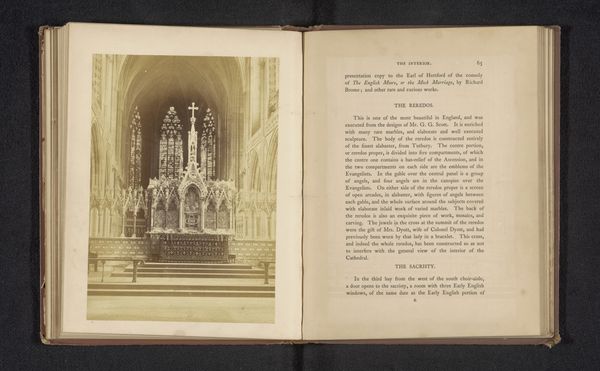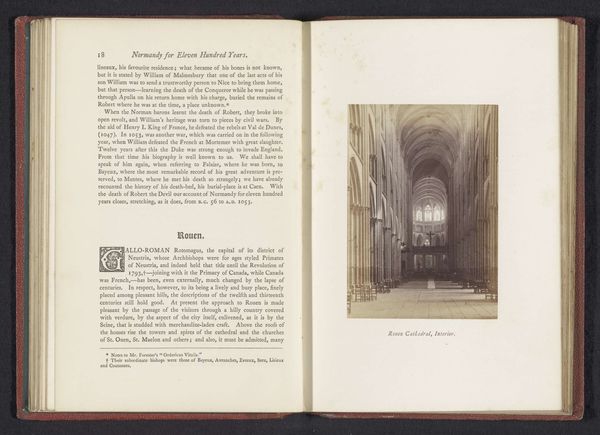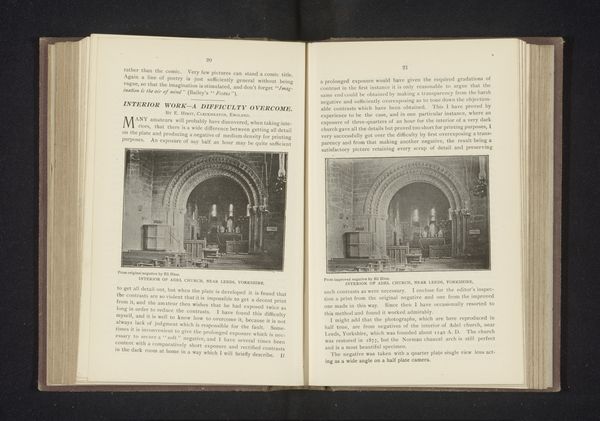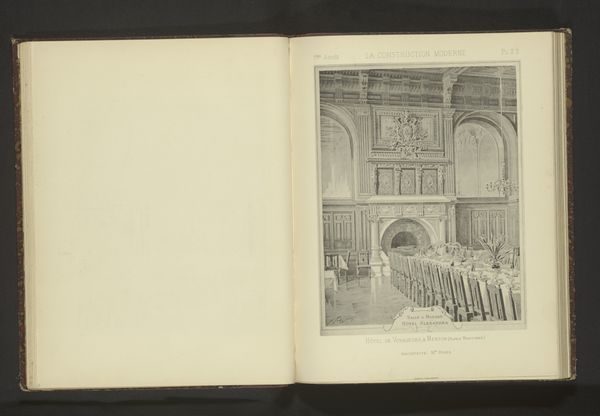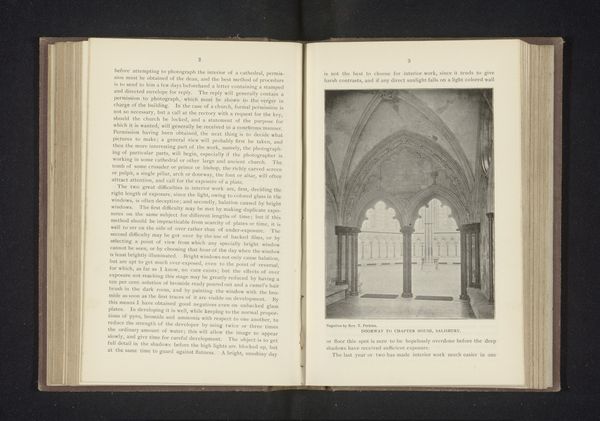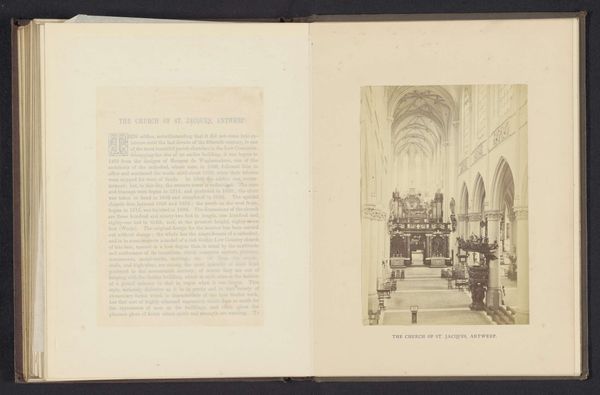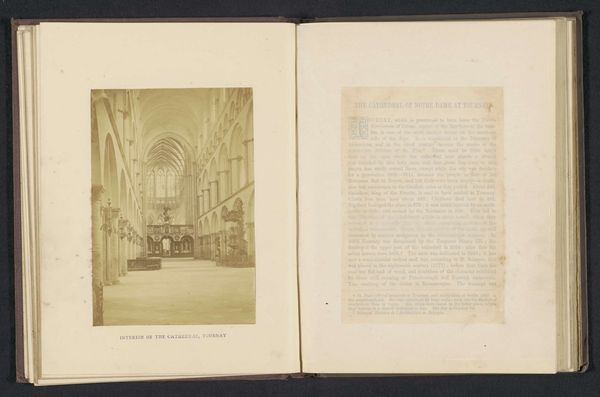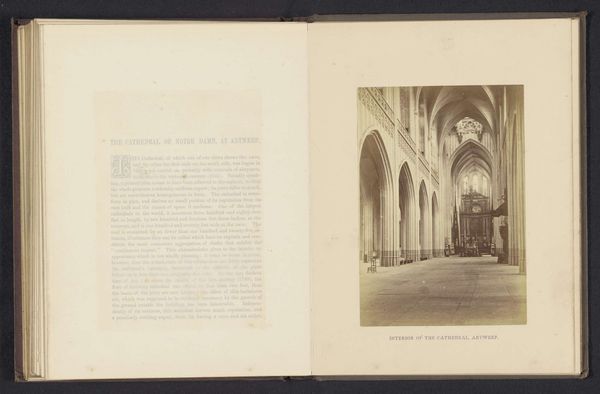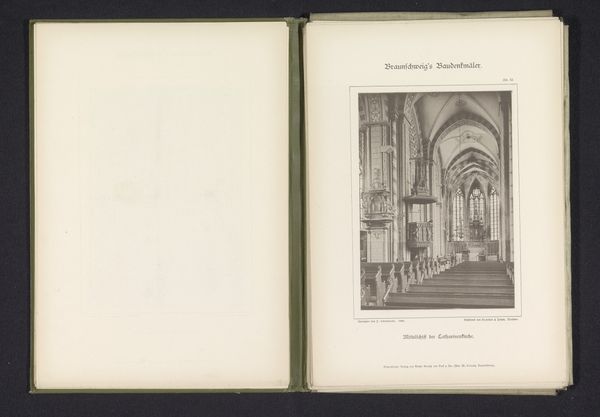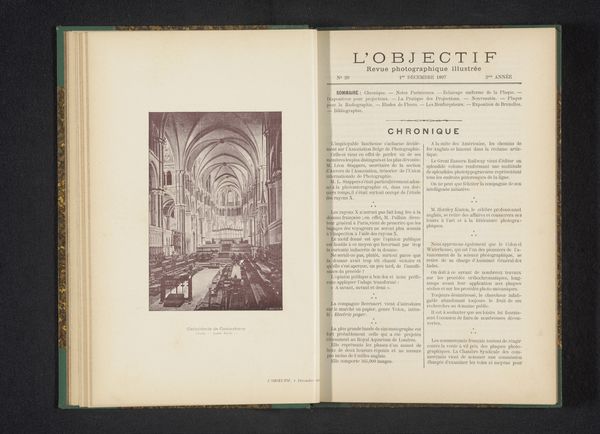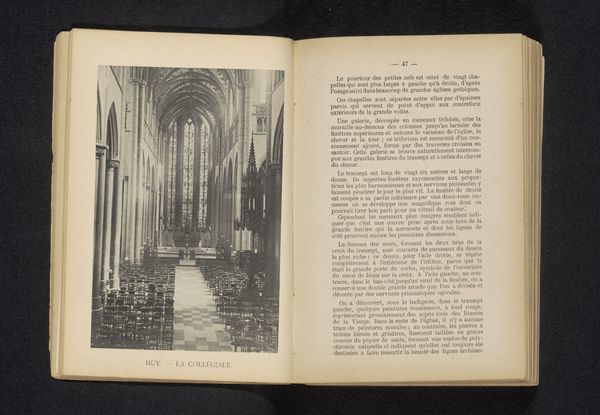
print, photography, collotype
# print
#
photography
#
collotype
#
academic-art
Dimensions: height 143 mm, width 102 mm
Copyright: Rijks Museum: Open Domain
Here we see a page from a book, an anonymous visual document offering a glimpse into the late 19th-century world of photographic reproduction. The page on the left shows a photograph of a "Beeldengalerij," a sculpture gallery. The photograph captures a long hall filled with classical sculptures. These sculptures, mostly of idealized human forms, stand as testaments to a Western artistic canon that, at the time, represented the epitome of cultural achievement. This image raises questions about access and representation. Who gets to be immortalized in art, and who gets to decide? The whiteness of the sculptures, rendered even more pronounced in the monochrome print, speaks volumes about the prevailing norms of beauty and importance. The accompanying text on the right delves into the intricacies of the collotype process. Note the names mentioned, M.M. Marechall, Jessie du Mothay, and Herr Albert, figures who were instrumental in refining this early photographic technique. Consider the layers of labor and technology embedded in this image. The sculptures themselves, the architecture of the gallery, the photographic process, and the printing technique—all contribute to a complex web of production and meaning. How does the image invite us to think about cultural value, artistic representation, and the circulation of knowledge in the late 19th century?
Comments
No comments
Be the first to comment and join the conversation on the ultimate creative platform.
